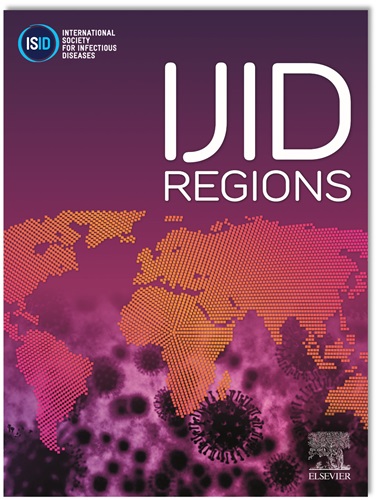Targeting cytokine signaling in mice infected with bunyaviruses provides protection from severe disease and death
IF 4.8
2区 医学
Q1 INFECTIOUS DISEASES
引用次数: 0
Abstract
Introduction
Crimean-Congo hemorrhagic fever virus (CCHFV) is an important human pathogen in the Bunyavirales order. CCHFV causes a spectrum of disease in humans that can range from minimally symptomatic to a catastrophic and lethal infection. Factors dictating why some develop mild illness and others succumb to disease are unclear. The cytoplasmic RNA sensor, retinoic acid-inducible gene I (RIG-I), has been shown to sense CCHFV in cell culture. When recognized by RIG-I an adaptor molecule, mitochondrial antiviral signaling (MAVS), induces pro-inflammatory responses as well as type I interferon (IFN-I).
Methods
We used a mouse model of CCFHV infection in various pathogen sensing and cytokine deficient animals to examine their role in the disease process. We also used antibodies targeting cytokines to show their importance in the disease process.
Results
We found that MAVS-deficient mice are not susceptible to CCHFV infection and show no signs of disease when IFN-I signaling was active. However, in an antibody mediated IFN-I suppressed mouse model, mice were uniformly protected from lethal disease (albeit with significant weight loss) and showed significantly blunted cytokine signaling, specifically TNF-α. All control mice succumbed to infection and displayed high cytokine levels. Additionally, we found that a disease causing but non-murine lethal strain of CCHFV (Kosova Hoti) produced more blunted inflammatory cytokine responses compared to a lethal strain (Afg09-2990) in mice. Subsequent investigation revealed that CCHFV infected mice lacking TNF-α receptor signaling (TNFA-R-deficient) had reduced liver pathology and were largely protected from lethal outcomes. Further, treatment of mice with an anti-TNF-α neutralizing antibody conferred partial protection in a post-virus exposure setting. Finally, interleukins 1 and 6 (IL-1, IL-6) were shown to be significantly downregulated in MAVS and TNFA-R deficient mice, which led us to explore their potential protective activity in CCHFV infected mice. We are also exploring the effects of suppression of IL-6 and IL-1 in mice infected with other bunyaviruses.
Discussion
Our work suggests specific pathogen sensing pathways or important inflammatory cytokine signaling pathways contribute to severe viral disease. We also found that a strain of CCHFV that does not cause lethal disease in mice does not induce as potent of an inflammatory cytokine response compared to lethal strains, despite similar levels of replication. This work highlights the host inflammatory pathway induced by viral infection as a component of the pathological process and should be consider important targets for medical intervention. Furthermore, CCHFV strains attenuated in the host failed to activate inflammatory pathway to a high degree, further implicating them in the severe disease process.
Conclusions
Our work reveals that induction of interferon and increased cytokine production both contribute to CCHFV pathogenesis, potentially identifying new therapeutic targets to treat this disease.
求助全文
约1分钟内获得全文
求助全文
来源期刊
CiteScore
18.90
自引率
2.40%
发文量
1020
审稿时长
30 days
期刊介绍:
International Journal of Infectious Diseases (IJID)
Publisher: International Society for Infectious Diseases
Publication Frequency: Monthly
Type: Peer-reviewed, Open Access
Scope:
Publishes original clinical and laboratory-based research.
Reports clinical trials, reviews, and some case reports.
Focuses on epidemiology, clinical diagnosis, treatment, and control of infectious diseases.
Emphasizes diseases common in under-resourced countries.

 求助内容:
求助内容: 应助结果提醒方式:
应助结果提醒方式:


